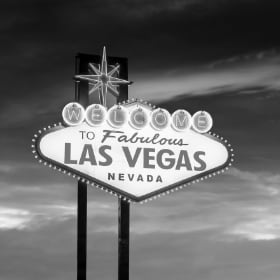
The history of Las Vegas

Every year millions of people visit the American city of Las Vegas where they gamble, go out or experience other entertainment. But how did Las Vegas become such a gigantic city, where literally everything is possible? What is its history and who had a great influence on the development of the city? We have sorted it out for you and summarized it!
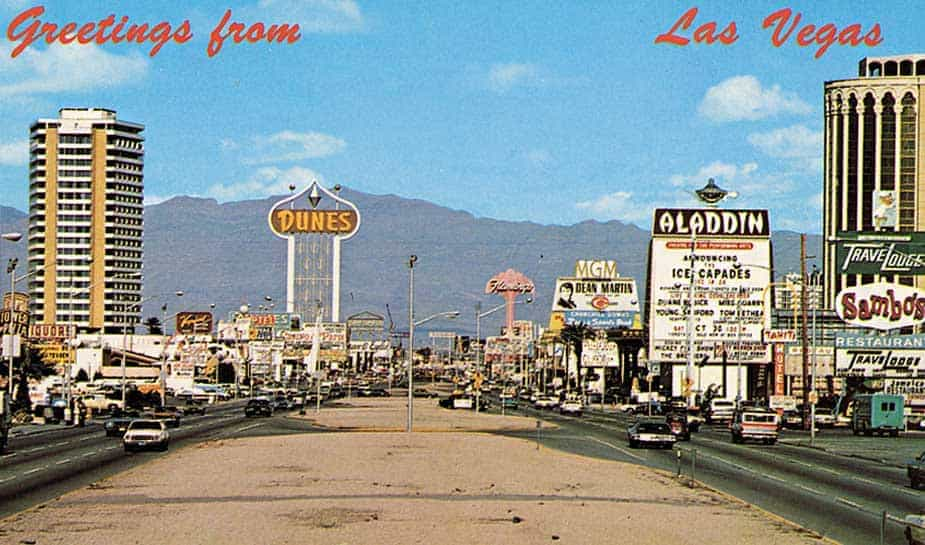
Until 1850, Las Vegas was inhabited by an Indian Tribe Called the Paiutes. The area was a popular stopover for traders and explorers heading to California. Not only were there natural water sources in the area, you also had green valleys back then. Hence the name Las Vegas; ‘The Meadows', in Spanish.
From 1850, thanks to the Mormons, it acquired the first features of a city. The then president, Brighman Young, did have an interest in this area between Salt Lake City and Los Angeles. He sent missionaries (clerics) to colonize the area and convert the Indians. For example, they built a fort (Old Las Vegas Mormon Fort) that you can still see to this day.
After a while, the Mormons left for Utah. Colonist Octavius Decatur Glass was assigned as the owner of the fort. In the years that followed, he further expanded his fort and focused on agriculture. For example, he could provide shelter and food for passing travelers and provide food for miners away from home.
Later the fortress passed into the hands of Archibald Stewart. After his death, he sold it to William Clark, the senator from Montana. He also took on the task of further developing the area. He took this seriously, because there was an extensive train network: from Utah to California. A very important development for the accessibility of the area.
In 1905 it was downtown Las Vegas divided into 1,200 lots and sold to both settlers and investors. 1905 is considered the birth year of the city. At a rapid pace, houses, schools, hotels and a hospital were knocked out of the ground.
Developing the train network was a smart move because people from all kinds of areas came to the city. As a final destination or short stopover.
1931 was the year the well-known Hoover Dam was built: a 221 meter high concrete arch/dam in the Colorado River. The dam was to prevent flooding and protect the surrounding land and farms. The Hoover Dam was named after Herbert Hoover: the 31st e president of the United States and then Secretary of the economy.
Another high-profile gebnzd happened in 1931: in the state of Nevada, gambling was legalized . Gambling was already very popular and was already common in local bars and pubs. It also made it easier for people to get divorced. Gambling in Las Vegas was legalized in 1931., is online gambling still available in New Zealand . Also a very interesting 'long-read' and what distinguishes Nevada from New Zealand in terms of decisiveness.
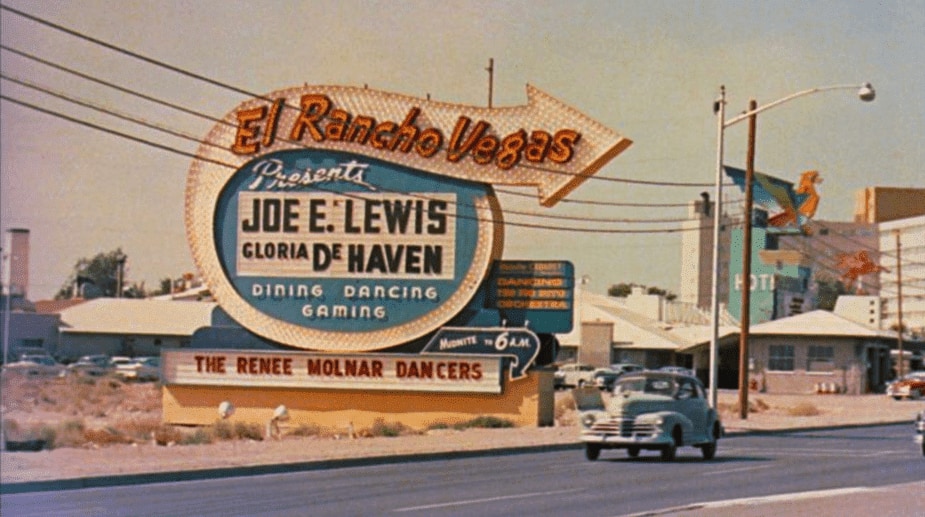
1941 was the year of Las Vegas ' very first casino: the El Rancho Vegas casino (built on the so-called Strip). In addition to the casino, El Rancho also had 63 hotel rooms. Ideal for gamblers who wanted to stay longer. The casino burned down 20 years later. The success of El Rancho caused a lot of publicity, which attracted more and more entreprénzds, investors and the mafia to the city. Then the casinos and hotels sprang up like mushrooms. Hotel Las Frontier and Hotel Flamingo were opened in 1942. Hotel Flamingo is the oldest Open Hotel in Vegas to this day.
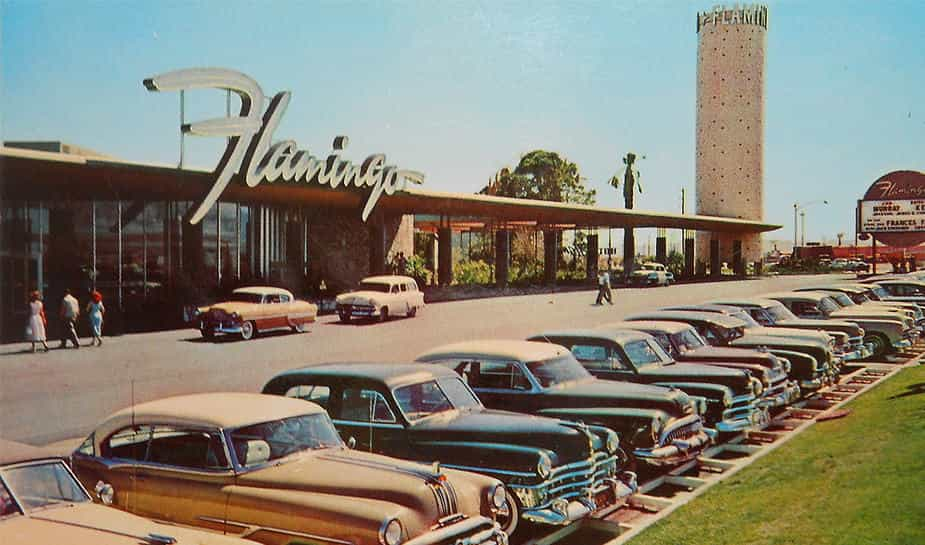
The Flamingo Casino and Hotel was not the first casino in Las Vegas. And today it is hardly special, compared to the many concept casinos that came later. But once it was famous and notorious for its connection with the mafia and gangster Ben "bugsy" Siegel. Filmmakers and book writers used many angles of the stories surrounding Flamingo Casino. They thus contributed to myths, misinformation and fake news.
In films, for example, Barry Levinson's Bugsy from 1991, Bugsy Siegel drives from Los Angeles to Las Vegas. Bugsy is going to see how the mafia's investments are handled there. He finds a large wasteland, dilapidated pickup trucks, and some dusty shops with horses in front of them. In a wave of inspiration, he sees the possibility of a casino or even the development of Las Vegas as the gambling city of America.
Books, zodiac articles and previous films have already described that image of Las Vegas. Bugsy's story has been told many times since 1991. Sometimes his real name is mentioned, just as often the Bugsy-based criminal has a different name. However, the myth surrounding Siegel's vision and the description of desolate Las Vegas recurs everywhere.
In reality, Las Vegas has been a developing desert city since 1931. There is much more ‘life in the brewery’ than outlined in the stories mentioned above. Until the opening of the Flamingo casino, several stories about Las Vegas can already be found that give a different picture. They are too positive and maybe too negative stories and everything in between.
For example, in 1939, Los Angeles Times columnist Chapin Hall writes about Las Vegas in his column. He confirms that it is a city in the transition from desert to Metropolis. Hall sees the contours: the big place in the desert has turned into a city with good hotels and restauZodiacs’in a few years. Other reports from the time praise the fashionable hotels and the boisterous clubs.
Wesley Stout writes enthusiastically in 1942 in the Saturday Evening Post Magazine about the resort hotels Nevada Biltmore, The Last Frontier and El Rancho Vegas. Luxury hotels with more recreational opportunities than just staying overnight.
The latter is evidenced by the article "Wild, Wooly and Wide-open", which appeared in the magazine Look in 1940. The redactNZD describes Las Vegas as an American Gomorrah, the most arrogantly conceited and self-consciously evil place on Earth. It is a place without shame, with open gambling, prostitution and quick divorces. A place too, where you can do whatever you want if you don't interfere with others.
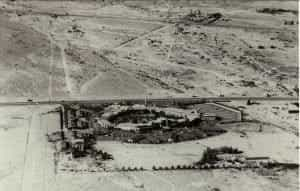
In that environment, Bugsy Siegel may have seen opportunities, but he certainly wasn't the first. And he does not even initiate the construction of the Flamingo casino. William "Billy" Wilkerson is the owner of The Hollywood Reporter. Billy started that magazine in 1930. A few years later, he begins construction and purchase of several nightclubs in Los Angeles.
In 1943, he began building the Flamingo casino. He wants a hotel like the one he saw in dollarpa, in Monte Carlo, for example. Wilkerson hates the desert, but he sees it as the ideal location for a gambling establishment because people are not distracted by sights. He asks architect George Vernon Russel to create a design for a resort, with hotel, casino, restauZodiac, fitness rooms, swimming pool and more. Interior designer Tom Douglas signs for the interiNZD.
In early 1945, construction begins. However, building materials are in short supply shortly after the war, which increases construction costs. In addition, Wilkerson is addicted to gambling. He has problems financing his project.
Then, at the end of 1945, Bugsy Siegel comes to Las Vegas, so as to look at other investments of the mafia. Of course, the guy with a past in nightclubs, horse racing and more lucrative ventures is interested in the city where gambling has been going on for years. He buys the casino-hotel El Cortez in what was then Downtown Vegas.
Not much later, he learns about Wilkerson's financial problems. Siegel, with money from his mafia boyfriends, participates in the project. Quite soon after, on december 26, 1946, the opening takes place.
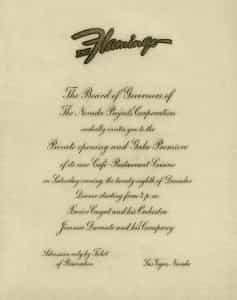
For the opening, Wilkerson and Siegel brought several artists and friends from Los Angeles. However, due to the bad weather, the turnout of gambling audiences is low. And many guests who could not book a place in the Flamingo casino hotel, soon disappear to other gambling establishments.
The first week The Flamingo casino makes a loss of a 300.000 dollars, converted over 4 million in 2018. Two weeks after the opening, the Flamingo casino closes, which is still being built.
On March 1, 1947, The Flamingo casino reopened. Siegel renamed it The Fabulous Flamingo. A month later, he works Wilkerson out of the enterprise. And another month later he writes his first profit figures.
However, the cost of construction has risen from 1 to 6 million dollars. The criminals ' friends, according to historians, have a suspicion that he printed money back from them. Barely four months after the opening, Bugsy is found murdered in Los Angeles on June 20. In his girlfriend's mansion.
After Siegel's Death, The Fabulous Flamingo casino falls into the hands of gangsters Moe Sedway and Gus Greenbaum. They are Relations of mafia accountant Meyer Lansky. The Flamingo casino will be a success under their wing. In 1955, Greenbaum stepped down.
The Flamingo resort then gets many more owners and some small name changes. The current owner, after several acquisitions of organizations in which the Flamingo was housed, is Caesar Entertainment Group. This conglomerate is the largest gambling organization in the world with more than 50 casinos.
A problem, but pleasant for the myth-formation around the Flamingo and Ben Siegel, is the closedness of the mafia. Former police commander Thomas Repetto, author of the book American Mafia, writes about this: criminal organizations do not record activities and do not keep reports of business transactions. As a result, many stories follow the popular rule " don't let the facts get in the way of a good story."
And that's what happened after the death of Siegel, who had many friends in the cultural world of Los Angeles. Writing and films are made, which sometimes stay close to the facts, but usually turn a small reality into a large dramatized story with its own truth.
Benjamin Siegel was a charming man with many friends in showbiz. No one doubts that. But he was not a manager. This was independently discovered by the writers John L Smith and Larry Gragg. They both did extensive research in all kinds of archives. Smith wrote the essay "The Ghost of Ben Siegel" in 1997. In 2015, Gragg published Benjamin “Bugsy” Siegel: The Gangster, The Flamingo, and The Making of Modern Las Vegas.
Gragg notes that Siegel was not a casino manager and in the eyes of his superiNZDen even a failure. He lived in the fantasy of a dreamed casino. And his murder? Gragg schrjift: ‘the mafia did not accept impulsive and unpredictable individualists, no matter how charming they were’.
John L Smith and Larry Gragg carefully study the available sources. Wilkerson's grandson also did so after seeing the film Bugsy in 1991. He wrote the book "The Man Who Invented Las Vegas". It takes a fresh look at the history of the city.
It is worth noting, after reading his book, The name Flamingo. It is often attributed to Siegel. It would be his girlfriend's pet name. But the name was given to the project by grandfather Wilkerson already at the start. He had seen the exotic birds during a trip to Florida.
And what about the casual remark that until 1945 was built in "the center" of Las Vegas. Wilkerson chose to build far beyond that so as not to suffer from competition. Of course, there was still the barren desert plain, as it is outlined in the popular stories and films.
Shortly after the construction of the first casino, a violent period began. World War II played a major role in the history of Las Vegas. An air base was established where American soldiers stationed themselves. This provided an even better logistical connection, and the city's revenues increased steadily.
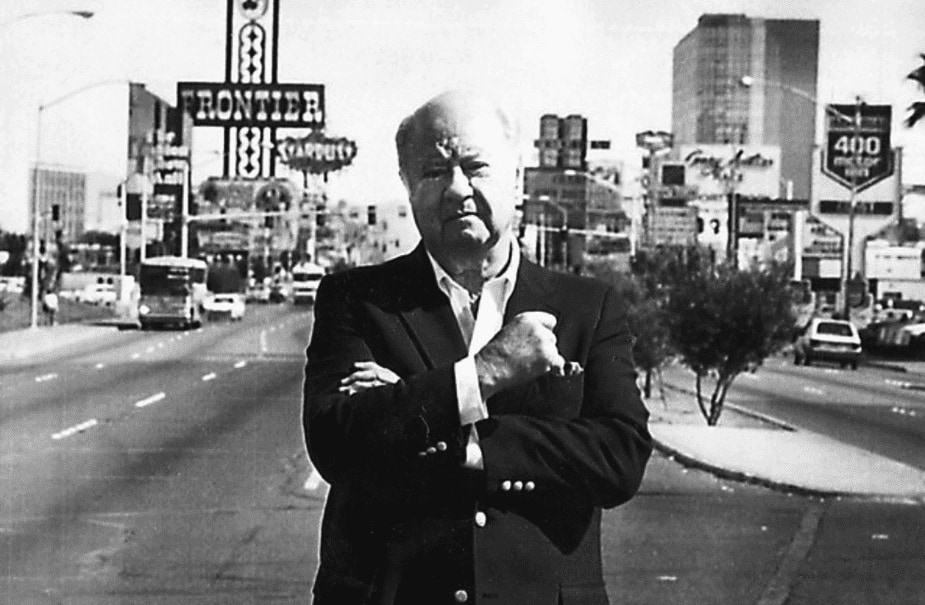
In the 1950s, Las Vegas was dominated by the mafia. The gangsters took over the whole city and they build one hotel or casino after another. Gambling was of course the ideal way to launder black and criminal money. Despite this, in 1954 no less than 8 million visitors came to the city. And not just visitors: Frank Sinatra, Elvis Presley and many others appeared on the well-known Strip.
The mafia weakened in the late 60s due to police actions and billionaire Howard Hughes (pictured above). During his visit, this eccentric stayed in a luxury suite at the Desert Inn Hotel & Casino. He bought this hotel, along with Castaways, Landmark, New Frontier, Silver Slipper and Sands. He invested millions to modernize the hotels. In this way, he was able to give the city a great boost and upgrade. So Howard Hughes played a big role in transforming Las Vegas as ‘Sin City’ into ‘Entertainment Capital of the World’.
Fun fact: Hughes's peculiar personality and bizarre life story can be seen in the Oscar-winning biographical film: the Aviator (2004). Leonardo DiCaprio plays the protagonist Howard Hughes. Highly recommended for the Las Vegas fan!
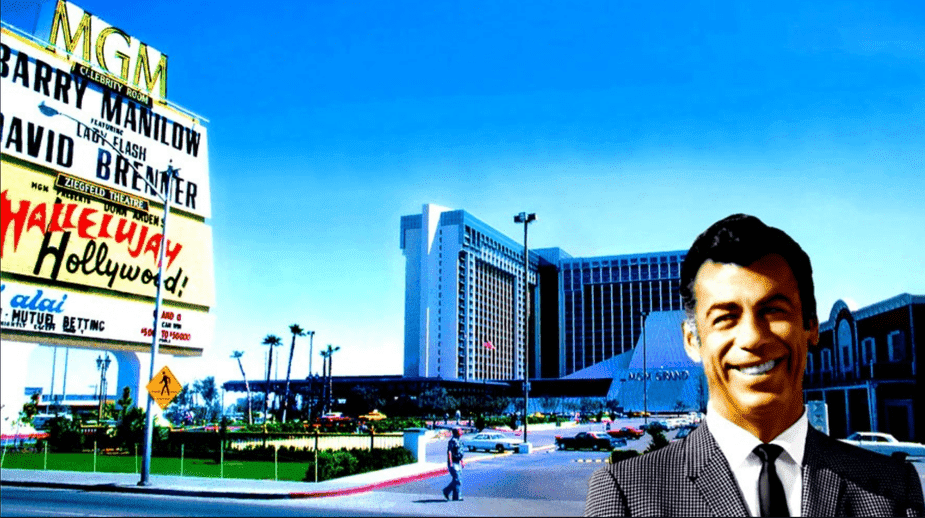
In 1968, Hotel Flamingo was bought by an American investor: Kirk Kerkorian. He hired the manager of the Sahara hotel so that he could recruit the staff for the still-to-be-built International Hotel which would open its dNZDen in 1969. And it didn't just become a hotel: a hotel with no less than 1,512 hotel rooms. Very unusual for that time. The International hotel was the beginning of the mega hotels and casinos on the Strip.
Kirk Kerkorian did not sit still. Four years later, he opened the MGM Grand Hotel & Casino: at that time one of the largest hotels in the world. Today the hotel is owned by Caesars Entertainment Cooperation. In 1980, a big band broke up. 87 people were killed and it took eight months for the hotel to reopen.
In 1989, a period began when small hotels (such as the Dunes, Sands Hotel, Stardust and the Sahara) were demolished and rebuilt into mega-resorts. It was no longer just about casinos, but also entertainment and other forms of entertainment. So there was an amusement park: the MGM Grand which soon had to close again due to too little animation. Aventuredome, an indoor theme park, and the Fashion Show Mall were more successful.
Today, Las Vegas is home to 2 million people. Every month, six thousand inhabitants settle in the area. Vegas is one of the fastest growing cities in the United States. To accommodate all those tourists, a lot of hotels were pounded out of the ground in the past. Below is a brief summary of the built hotels and themes.
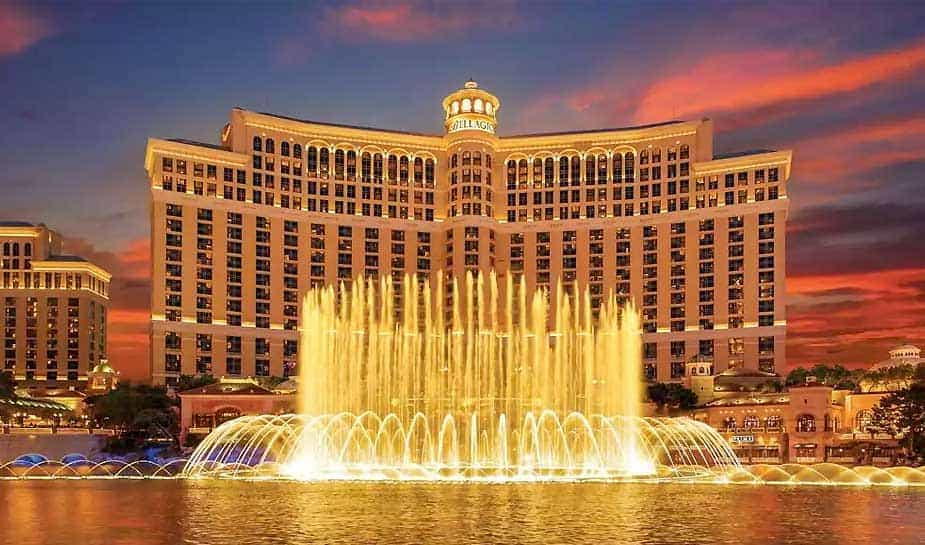
The megaresort era began in 1989 with the construction of the Mirage, built by developer Steve Wynn. It was the first resort built with money from Wall Street and sold $ 630 million in junk bonds. The 3,044 rooms, with gold-tinted windows, set a new standard for luxury in Vegas. As a result, tourists flocked to the city, leading to additional funding and rapid growth on the Las Vegas Strip.
Important hotels and other buildings were razed to the ground to make way for ever larger and more luxurious resorts, including:
1998: Bellagio (3,950 rooms) - has a garden with birds, and in the lobby large glass flowers hang from the ceiling. Of course, the Bellagio is also known for its world-famous fountains for the dNZD.
1999: Mandalay Bay (3,309 rooms) - this hotel and casino is most famous for its shark sanctuary. There is a saltwater aquarium and a shark enclosure, the third largest aquarium in the US. The hotel is also known for its swimming pool, which is also called Mandalay Beach: it looks a lot like a beach. On October 1, 2017, the terrible shooting took place, which left 59 dead and more than 500 wounded. The gunman, Stephen Paddock, was at the Mandalay Bay hotel at the time.
1999: Venetian (4,049 rooms) - completely built in the theme of Venice, including the corresponding gondolas on the water. The ceiling is beautifully painted with clouds where it seems as if they move with you when you walk under them.
1999: Las Vegas, NV (2,915 rooms) - built in the Paris theme. The casino, lobby and promenade were built according to the idea of Quartier Latin. In addition, the hotel has a small version of the Eiffel Tower and the front of the hotel looks like you are in front of the Louvre.
2000: Planet Hollywood (2,600 rooms) this hotel and casino has the theme ‘Hollywood & fame’. You will be treated like a movie star. And there have also been many stars. For example, Elvis Presley married Priscilla a year after the opening. Did you know that this hotel was formerly called Aladdin?
2001: The Palms Casino Resort (703 rooms)-the resort is designed in Neo-retro style. It is a popular destination among young people and Hollywood stars. Bizarre: there is a 1,000 m2 suite with a basketball court, including scoreboard, dressing room and multi-screen entertainment system. Other special suites are the G Suite, The Pink Suite and the Playboy Villa.
2005: Wynn (2,716 rooms) – the Wynn is one of the tallest buildings in Las Vegas. It has its own golf course where you as a guest can make a round for a little 500 dollars. Wynn Resorts was named the most admired casino company in the world by Fortune magazine in 2010.
2007: The Palazzo (3,068 rooms) - a modern, luxurious and Dollar-style hotel. The hotel is connected to The Venetian, actually the extension of the hotel. Wynn can be reached via a walkway. The building is 196 meters high, making it the tallest building in the state of Nevada.

Las Vegas is known for its entertainment industry. The many hotels and casinos attract millions of tourists to the city. Day and night there is something to do. Today, most hotels and casinos are located on the Strip: the front section of Las Vegas Boulevard. Last year, Vegas was named the entertainment city of the world. The performances of many world-famous artists, such as Jennifer Lopez, Britney Spears and the Backstreet Boys, certainly contributed to this.
Want to know more about this special city? In this article read your 10 Interesting Facts about Vegas that you didn't know!
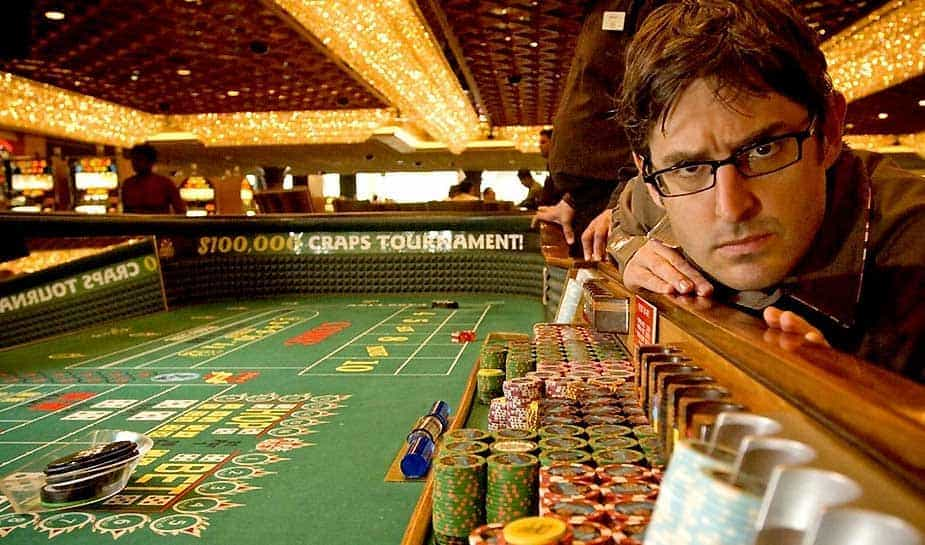
In Las Vegas you can go to the casino 24 hours a day and 7 days a week, if you are over 21 years old at least. Want to gamble in Vegas? Then make sure you play on the slots with high payout percentages. Decide which games you will play: will it be a video slot roulette, blackjack or a nice game of poker? Gambling in the gambling city is a great experience. Oh, and get a credit card with enough limit!
We recommend choosing a hotel that is centrally located on the Strip. Will it be a real casino hotel or do you find it too overwhelming? You can also choose a hotel without a casino. Yes, they really exist! On this page you will find our top 10 hotels in Las Vegas , so that the choice from the tangle of hotels hopefully becomes easier!
You now know (if it's any good) all about Vegas ' illustrious past and what the city is like now. In the article about winning money in a casino from the Online Casino Games Las Vegas series you will read all about that subject that the whole city revolves around: gambling. What should you pay attention to if you want to take a gamble in Vegas? We provide you with useful tips!
This part of Vegas is often skipped, a missed opportunity. The largest and most famous hotels are of course on ‘the Strip’, but downtown Las Vegas also has plenty to offer. In addition to a great atmosphere, you will also find cheaper casinos with a nice vintage look. The beautiful neon advertisements add even more to this nostalgic, friendly atmosphere. Downtown is definitely worth a visit, especially in the evening!
What do you do in Vegas anything else besides gambling? Of course, you can gamble excellently in Vegas, but there is so much more to do. There are many fun day trips to book, for example to the Grand Canyon and even to Los Angeles! You must be crazy to skip the Grand Canyon for a few extra hours behind the slot machine. Do you prefer to stay in Las Vegas? Then pay a visit to the High Roller, a huge ferris wheel where you have a great view of the Strip.
There are now dozens of luxury hotels on the Strip and out there. However, there are plenty of classic, legendary hotels from the past that you can unfortunately no longer visit at the moment. Read more about 6 closed hotels in Las Vegas.
Did you enjoy reading about the Flamingo Casino? Discover the history of the first Western casino the Ridotto. The the story of William Crockford you may also be interested in: from a simple fishmonger, he grew into one of the richest people of his time. Francois Blanc was also an interesting personality, he is not called the inventor of Casino Monte Carlo called. Prefer more about Las Vegas ? Read about the best hotels, restauZodiacs and, of course, casinos in Vegas.